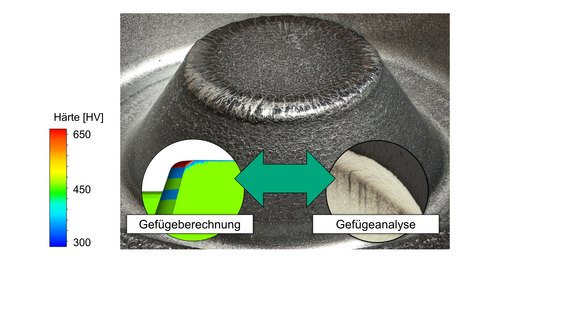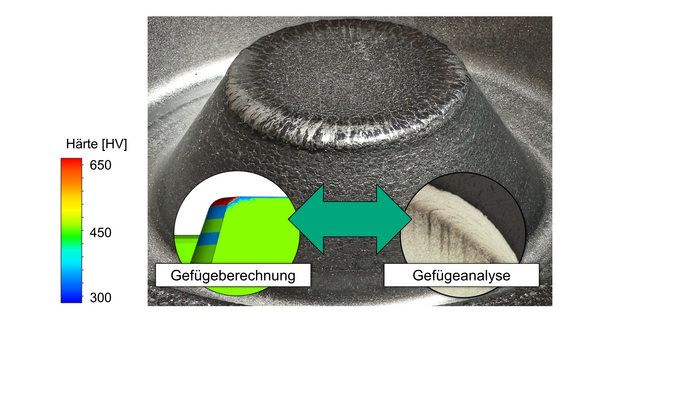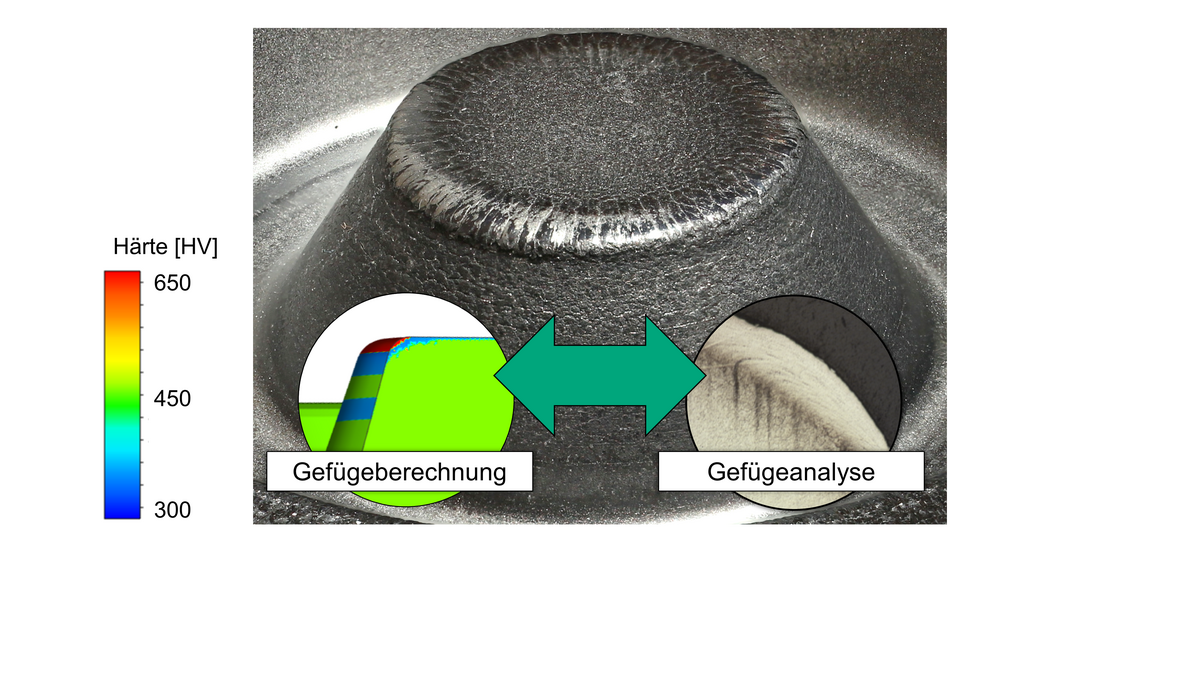[Translate to English:] Bernd-Arno Behrens, Anas Bouguecha, Milan Vucetic und Alexander Chugreev (2016) MATEC Konferenz (NUMIFORM 2016: „The 12th International Conference on Numerical Methods in Industrial Forming”), Volume: 80; Page: 04003.



Die load calculation achieves the goal of predicting mechanical and thermal loads on the die surface. An intensive thermal load can lead to a wear-promoting decrease in tool material quality. In addition, the calculation of the mechanical load allows the exact localisation of stress peaks. These stress peaks promote the formation of cracks in the further use of the die, which in turn can lead to the abrupt failure of the die. However, formation of cracks is influenced by complex interaction of thermal and mechanical loads which lead to a time dependent change of die material properties. In this context, a realistic numerical prediction of die life time needs to consider both the change of die material properties as well as a realistic description of occurring thermal and mechanical surface loads within the process. Numerical die life prediction can be used to evaluated process and material modification regarding an extension of die lifetime. This reduces costs in subsequent production and achieve a higher die life.
From the current state of the art in wear analysis, it is known, that the wear development of a forming die can be expected to be non-linear. Thus, a distinction is made between a run-in phase, in which an irregular wear behaviour is observed, and a subsequent phase, in which the wear develops linearly. A third phase, which does not necessarily always occur, is characterised by a quasi-abrupt failure of the die. Within the framework of FE calculations using the Archard wear model, it is assumed that the case hardness of the die is invariable, which means that only a linear wear development can be represented. Through current research at the IFUM, it is possible to map the hardness evolution as a function of thermal and mechanical load via the number of production cycles. In this way, the running-in phase and the characteristics of the subsequent continuous wear phase can be characterised in more detail. This enables companies to estimate the service life expectation of their dies more precisely based on concrete key figures, which leads to savings in production planning.
Publication
IFUM is significantly involved in this field with the development of new numerical modelling algorithms. Among other things, these are to be used to predict die wear in relation to a change in geometry during the forging simulation. Changes of the process parameters in the contact area caused by the change of the geometry lead to a changed distribution of the die load and the die wear. This mainly affects the die areas that are exposed to high thermal and mechanical loads.


























